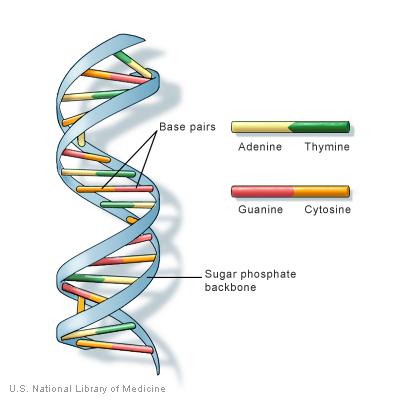
4 minute read
DNA in Fossils?
DNA in Fossils?
Advertisement
Fossils are important evidence for evolution because they demonstrate that life on Earth was once different from life found on earth today. The DNA in fossils have helped us discover what animals were living here before, and how they have developed/evolved to the animals they are now. (Evidence of common descent)
What are fossils?
The preserved remains or traces of animals, plants, and other organisms from the past are called fossils. They can be found where sedimentary rocks, such as river valleys, cliffs and hillsides, and human-made exposures such as quarries and road cuttings. Some people wonder why some types of fossils are found in deserts, the reason is that many years ago that desert used to be an ocean with many different flora fauna we now know existed (thanks to fossils). A 40 million old whale which was not known existed in that part of the world was found in 2013 in the Southern desert in Peru. (BBC Ancient sea fossils) (BBC Ancient sea fossils)


After analyzing the bone structure and putting all the pieces together, scientists drew a sketch of how they thought the whale looked. (Images from BBC Ancient Sea Fossils)
What can we find out about DNA in Fossils?

In 1993 a weevil was found in India in a forest, scientists opened the amber and tested the DNA. They found out that the weevil was more than 120 million years old. (Can we find DNA in Fossils)
Curculionidae, weevil beetle. Fossil insect in baltic amber.
Where can DNA in Fossils be found?
DNA can be found in some fossils due to the ressins of tissue and bone left. According to PBS Eons, DNA can´t be found in every type of fossil and especially not from every time period.
What's the best source for preserving Fossils with DNA?
The best source to keep the DNA in fossils is amber:
Amber dehydrates the DNA, makes it more stable, the tree resins has antimicrobial properties which keeps the tissues from breaking down. This way fossils can be preserved longer and we can discover new ancient species that were once living on
Earth. (BBC Ancient Sea Fossils)
Curculionidae, weevil beetle. Fossil insect in baltic amber.

How long can DNA be testable for?
Experts knew that such ancient DNA wasn't pristine and perfect because the DNA degraded. DNA degrades all the time, even in living things. The base pairs that form its code are always being changed by different processes.
The most common one is depurination. Depurination is caused by water molecules in cells that attach to some base pairs, which makes them more likely to come off. Water is good for cells, but over time it causes damage, also in DNA, although this happens to everyone and is very common. (What can we find in DNA in Fossils) Scientists wondered how long it took for DNA to degrade to the point where it was no longer readable. 100 years? 100 million years? We know that DNA has a lifetime: marks the amount of time until half the DNA in a

sample is degraded beyond use.
Different animals have different lifetimes. For example: a bird bones half their lifetime is 521 years.
Best environment to preserve Fossils
The best environment to preserve fossils is in cold temperatures with limited fluctuations. It’s better to test the DNA from inside a bone than outside. The less interactions with nature the better the DNA is preserved. This is why testing the DNA from inside of the bone than outside is more successful. (BBC Ancient Sea Fossils)
Reading DNA
To read DNA molecules you need a lot of it to make sense of what you are reading. Meaning, you need to make many copies of it, called amplification. The most efficient way to amplify DNA is called PCR, Polymerase Chain Reaction. (What can we find in DNA in Fossils)
Polymerase chain reaction is a faster way to make millions of copies of a specific DNA sample, letting experts take a very small sample of DNA and amplify it to a large amount to study in detail. (Polymerase Chain Reaction, Wikipedia)
(The biology notes)

Citations:
Libretexts. “18.5A: The Fossil Record as Evidence for Evolution.” Biology LibreTexts, Libretexts, 19 Nov. 2019, bio.libretexts.org/Bookshelves/Introductory_and_General_Biology/Book%3A_Ge neral_Biology_(Boundless)/18%3A_Evolution_and_the_Origin_of_Species/18.5%3 A_Evidence_of_Evolution/18.5A%3A_The_Fossil_Record_as_Evidence_for_Evolu tion.
“Ancient Sea Fossils Found in Peruvian Desert.” BBC News, BBC, 14 Sept. 2013, www.bbc.com/news/av/world-latin-america-24090109/ancient-sea-fossilsfound-in-peruvian-desert.
“Can We Find DNA in Fossils?” Can We Find DNA in Fossils?, PBS Eons, 2 Oct. 2018, https://www.youtube.com/watch?v=_nJdWqtMljs .










